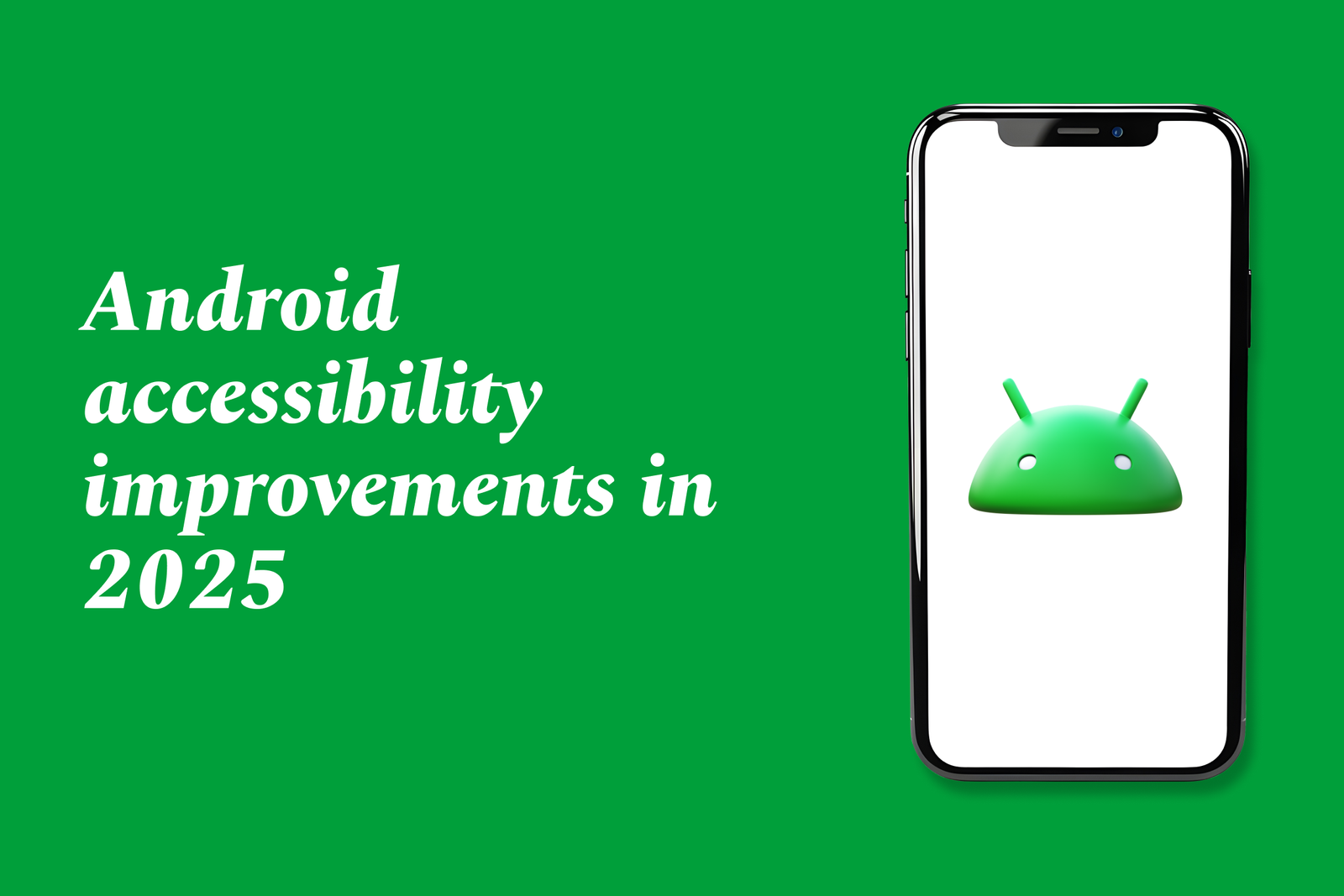Android Accessibility Improvements In 2025
In 2025, Android enhances accessibility with improved Scene and Message Center features, faster loading, better assistive feedback, advanced camera controls, and refined user interactions—ensuring a more inclusive, intuitive, and seamless experience for all users.
Android accessibility improvements in 2025
1 ) Enhanced Accessibility Features in Android SDK
The 2025 updates to Android SDK, particularly versions 19.9.0 through 19.9.2, focus extensively on accessibility improvements for Scenes and Message Center functionalities. Key fixes include:
Accessibility fixes addressing Scene layout, modal frames, margins, border rendering, and corner radius adjustments.
Added support for more flexible survey toggles to improve user interaction.
Accessibility dismissal announcements for in app messages enhance feedback for users relying on assistive technologies.
Better lifecycle management of accessibility listeners to prevent leaks and improve stability.
2 ) Improved User Experience and Performance
Scenes now load faster with concurrent asset prefetching, smoothing interaction especially for users relying on assistive technologies.
Message Center reliability increased by automatic retries on failed message list refreshes, ensuring consistent access to content.
Usability improvements in grouping controls, group volume, and message browsing also contribute to accessibility by simplifying navigation.
3 ) Support for Advanced Camera Controls
Android 16 introduces hybrid auto exposure modes allowing fine control of ISO and exposure time alongside automatic adjustments, benefitting users needing customizable photographic experiences.
Precise color temperature and tint adjustments support professional video recording with manual white balance control, expanding accessibility for creative users.
New Intent actions for motion photo capture simplify multimedia accessibility and integration.
4 ) Commitment to Privacy and Inclusive Design
Ongoing enhancements include improved privacy features and continuity in supporting a platform that prioritizes security without sacrificing accessibility.
5 ) Forward Looking Development
Android’s road map continues to prioritize enabling creative expression, professional experiences, and seamless use of multiple device types with integrated accessibility support embedded throughout the platform.
In summary, Android’s 2025 platform updates demonstrate a strong commitment to improving accessibility through technical fixes, user interface enhancements, and expanded controls, ensuring an inclusive and empowering environment for all users.
https://justacademy.in/news-detail/google-i/o-2025-highlights:-flutter-takes-the-lead
https://justacademy.in/news-detail/new-features-in-flutter-4.0-stable
https://justacademy.in/news-detail/flutter-vs-swiftui:-ios-devs-take-note
https://justacademy.in/news-detail/flutter-native-compilation-for-web
https://justacademy.in/news-detail/flutter-theme-extensions-in-latest-version
Related Posts
In 2025, top Angular libraries offer modern, feature-rich components and tools for building dynamic web apps. From powerful data grids to low-code platforms like UI Bakery, these libraries enhance development speed, UI design, and scalability, making them essential for Angular developers.
Migrating from AngularJS to Angular 17 involves gradually upgrading your app by running both frameworks together using tools like ngUpgrade, rewriting components in TypeScript, and adopting Angular’s modern architecture to enhance performance, maintainability, and long-term support.
Angular state management tools help organize and handle app data efficiently, improving scalability and maintainability. Popular options include NgRx for robust, RxJS-based patterns, and newer Signal Store solutions that offer simpler, reactive approaches integrated tightly with Angular’s latest features.
RxJS in Angular empowers developers to manage asynchronous data streams with powerful operators like `forkJoin`, `combineLatest`, and `zip`. Mastering these key operators in 2025 is essential for building efficient, reactive applications that handle complex event sequences seamlessly.
Angular performance optimization in 2025 focuses on improving app speed and responsiveness by using techniques like OnPush change detection, lazy loading, efficient data caching, and AOT compilation. These practices reduce load times, enhance user experience, and ensure scalable, fast Angular applications.
In 2025, Angular remains preferred for large-scale, enterprise apps with its robust, all-in-one framework, while Vue attracts developers seeking simplicity and fast development for smaller projects. Both frameworks excel, with choice driven by project needs and team expertise.
Angular Signals are a new reactive primitive in Angular 16 that enable fine-grained, efficient change detection by automatically tracking dependencies and updating only affected parts of the UI. They simplify state management and boost app performance, revolutionizing Angular's reactivity model.
Angular interview questions to prepare in 2025 focus on core concepts like components, directives, data binding, routing, and dependency injection, along with TypeScript mastery and latest Angular features to ensure strong practical knowledge for building scalable, efficient web applications.
AngularJS reached its official end of support in January 2022, meaning no further updates or security patches. To ensure app security and performance, developers should consider migrating to modern Angular versions or seek third-party long-term support options if immediate migration isn’t possible.
The Angular Roadmap 2025 highlights upcoming features focused on improving developer experience and performance, including zoneless Angular, Signals integration, enhanced Forms, async data handling, improved HMR, and expanded Angular Material/CDK enhancements, driving modern, efficient web app development.










